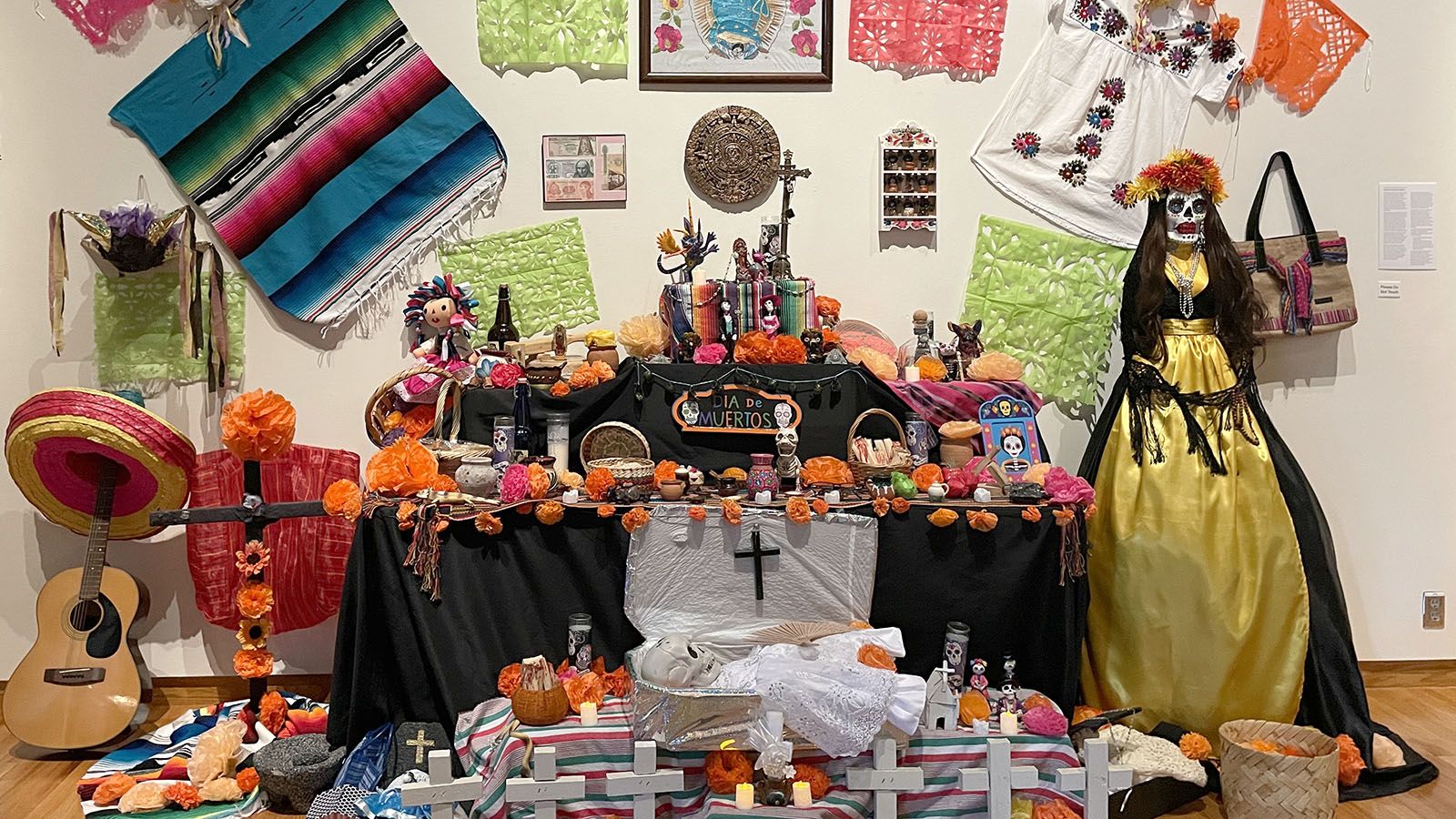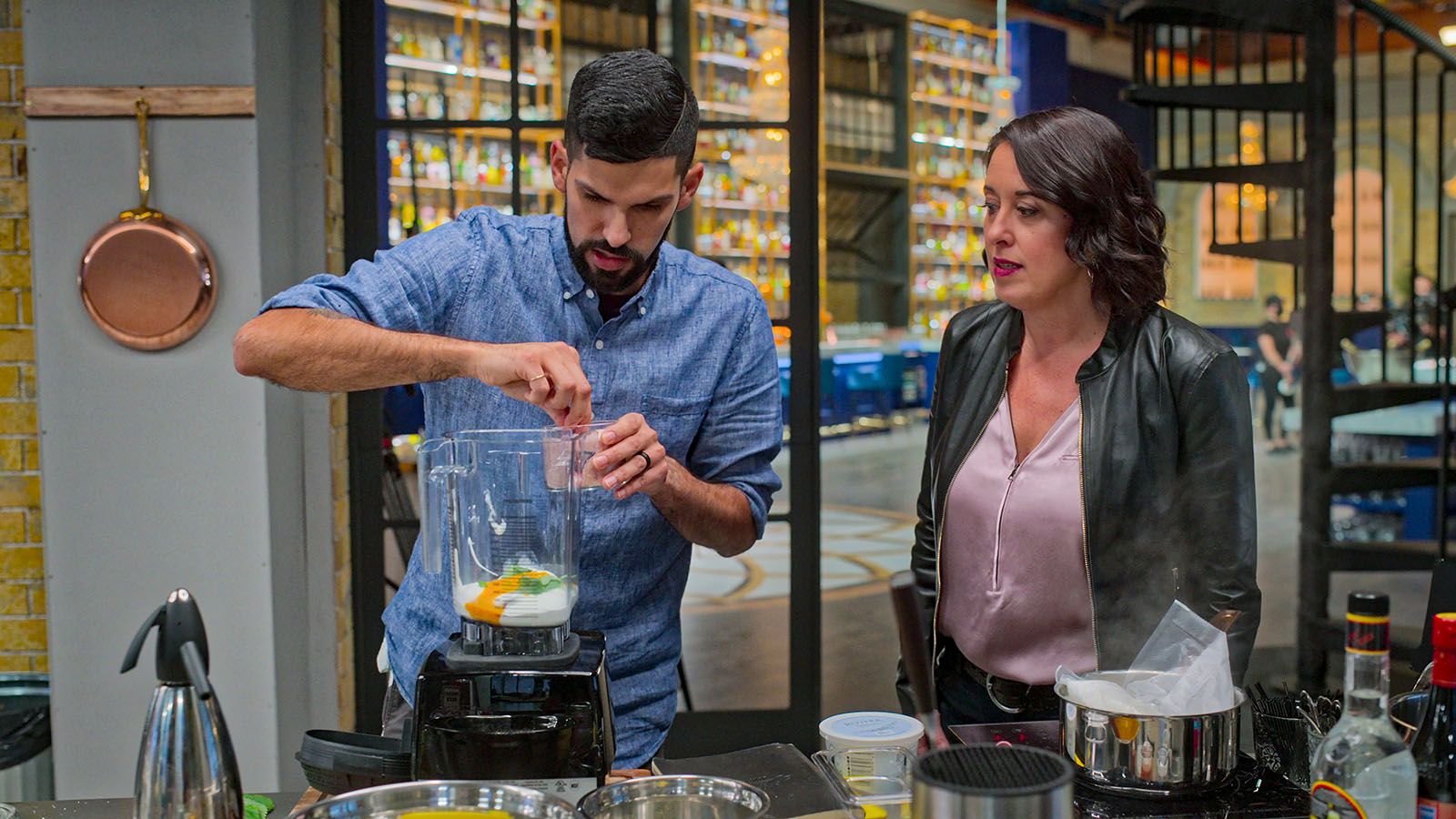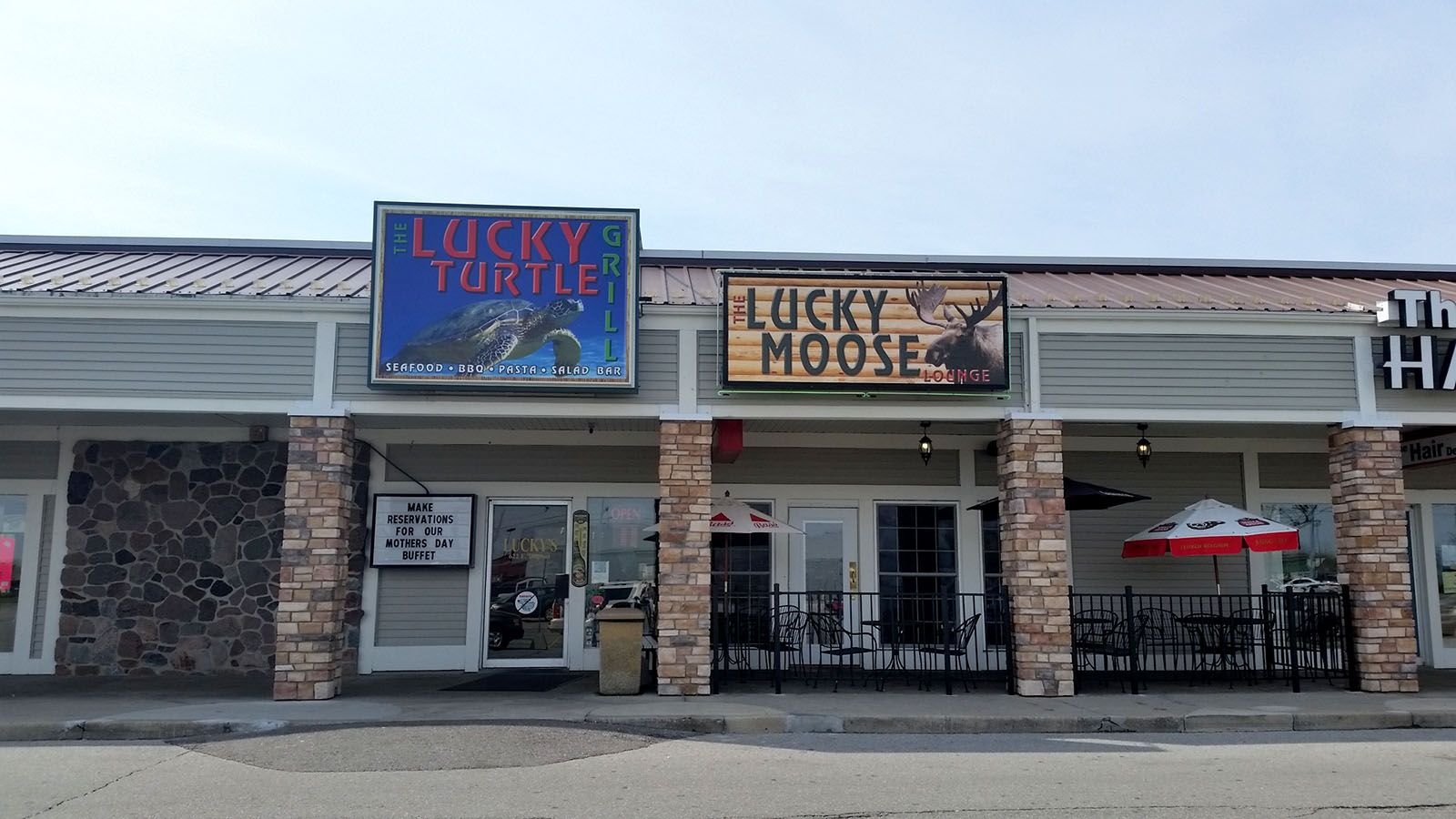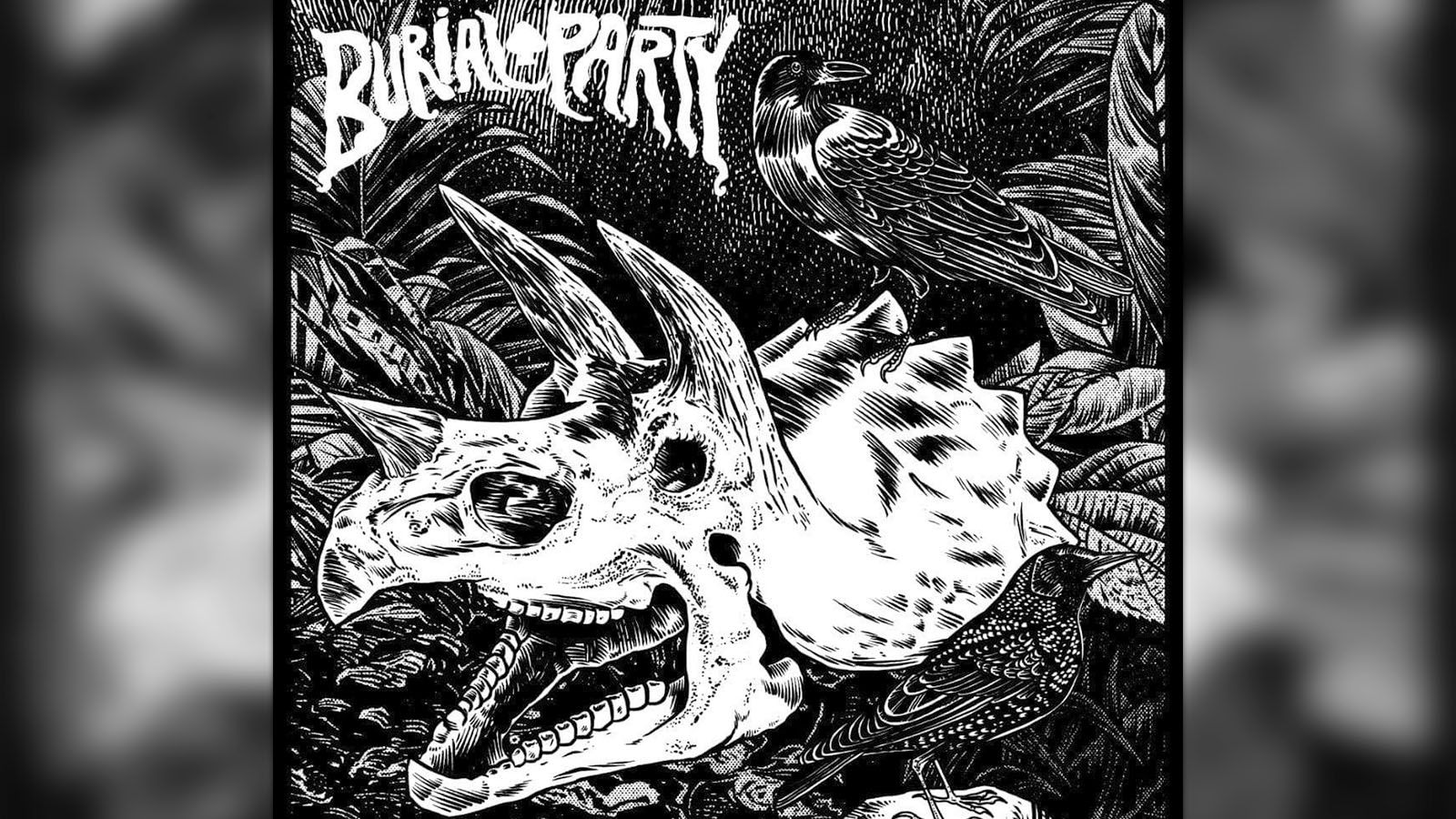For decades, the Fort Wayne Museum of Art has invited Mexican-Americans to bring an annual folk tradition from their homes into the museum to share with the community.
Paired with important pieces of fine art from its permanent collection, the museum shares Día de los Muertos, “Day of the Dead,” with museum-goers and school groups for six weeks.
On a recent Saturday I was given a tour by director of education Alyssa Dumire and Language Services Network director Raquel Kline, who moved to Fort Wayne from Nicaragua 20 years ago.
I was surprised to find that this year’s eight installations, created not by professional artists but by families, school groups, and Fort Wayne’s Center for Nonviolence, memorialize not only Mexican-Americans, but also local people from the West African nation of Guinea, Japan, Anglo- and European-Americans, and famous artists who have passed away recently.
keeping with tradition
Dumire makes the point that Día de los Muertos is not Halloween, which is a separate tradition with a different meaning in the U.S.
Día de los Muertos is the Mexican celebration of All Saints’ Day and All Souls’ Day, Nov. 1-2, holy days observed by people in the Roman Catholic Church and other Christian denominations around the world.
The museum opens this exhibit to anyone in the region, Mexican or not, who wants to memorialize a deceased loved one. I’ve seen Día de los Muertos exhibits before, but never one that celebrated folks from all backgrounds.
In the Mexican tradition, it’s a festive family gathering. People believe that on Nov. 1-2 the souls of their deceased family members and ancestors draw near to the living. Families build tabletop ofrendas (offerings or altars) to commemorate each person, providing photos, art, and items that were dear to the person being remembered. They put out the person’s favorite foods or drinks, personal items, and heirlooms. It’s an opportunity to remember each life story. Everything is decorated with bright colors and, traditionally in Mexico, fresh orange-colored marigold flowers.
On Nov. 2, families walk through cemeteries to visit tombs and gravesites and decorate them with marigolds. As for Fort Wayne and across the U.S., however, when a Mexican-American dies here, often their remains are returned to their ancestral hometown in Mexico. Families here rely on family back there to make the visits.
Fernando Zápari, publisher of local newspaper El Mexicano and a Fort Wayne resident of 45 years, is proud to report he still hires a caretaker to tend to his parents’ tomb in Mazatlán, Sinaloa, on the Pacific coast.
“All over Mexico, Día de los Muertos is the biggest family celebration outside of Christmas,” he said.
Zápari estimates there are 17,000 people of Mexican descent, out of 28,000 Latino-Americans, in the Fort Wayne area. Kline explained that many of these families will be building private ofrendas in their homes, not in public.
variety of ofrendas
Fort Wayne Museum of Art seeks to build a connection between this grand tradition for one group of people and the whole community. In August, they began accepting applications from folks in town to build ofrendas and provided help to create something meaningful and festive.
Luis Hernandez built an ofrenda to his grandfather, Rogelio Castellano Cuevas, and his orange and tangerine groves, decorated with papel picado (strings of designs cut out of paper), and a common image of Día de los Muertos, La Catrina. She is a cartoon skeleton dressed in women’s finery that first appeared about a hundred years ago and was drawn to make fun of the way that some Mexican women tried to copy European fashion.
Students of Eagle Tech Academy built an ofrenda to Japanese-American Shinzo Ohki, who graduated Columbia City High School in 1907 and went on to build a famous business introducing chow mein, chop suey, and soy sauce to the region. He died in 1967. The ofrenda is decorated with gingko leaves, cherry blossoms, Japanese lamps, and photos and mementos of the business.
The largest ofrenda, and the only one with a somber theme, was built by Fort Wayne nonprofit Center for Nonviolence and the local United Women support group in memory of victims of domestic violence. An inscription says, “This altar honors those who lost their lives as they have struggled to survive the cycle of abuse in their home.” It says that 51 women and 12 children have met this fate in Indiana since 2019.
I was astonished to see the next ofrenda, decorated with the instruments of an African dance band. Ballet Watafre was a drum and dance troupe from Guinea that settled here in the early 2000s, and all five members have since passed away. You can see their kora (African harp), djembe and dundun drums, and balafon (hand-carved xylophone) displayed beneath the Guinean flag, the table decorated with a mancala game board and personal objects and photos.
The Garrett family built an ofrenda to Lance Garrett, mother Maria Elena Garay, and grandmother Patricia Hernandez, an herbalist and healer who cared for the indigenous community in Mexico.
Bridgett Hernandez built an ofrenda to her grandmother Mary, the family cook, and it’s all about home-made food, recipes, and good humor.
The Vargas family present an ofrenda to Santiago Zurita Vargas, who passed away in 2021, the inspiration for a great deal of art in papier mâché, with Catholic and Aztec themes.
Finally there is the “community altar,” already memorializing dozens of folks. If you would like to honor a departed loved one, you can contact the museum before Oct. 31 and ask to bring a photo or a small personal item to be displayed. They will also place a paper butterfly with your family member’s name on the wall.
The exhibit will remain through Sunday, Nov. 13, and the museum will host the main event at 2 p.m. on Sunday, Nov. 6, where the community can come together to celebrate and to tour the other beautiful exhibits throughout the museum. Whatzup will see you there.
 Submit Your Event
Submit Your Event




